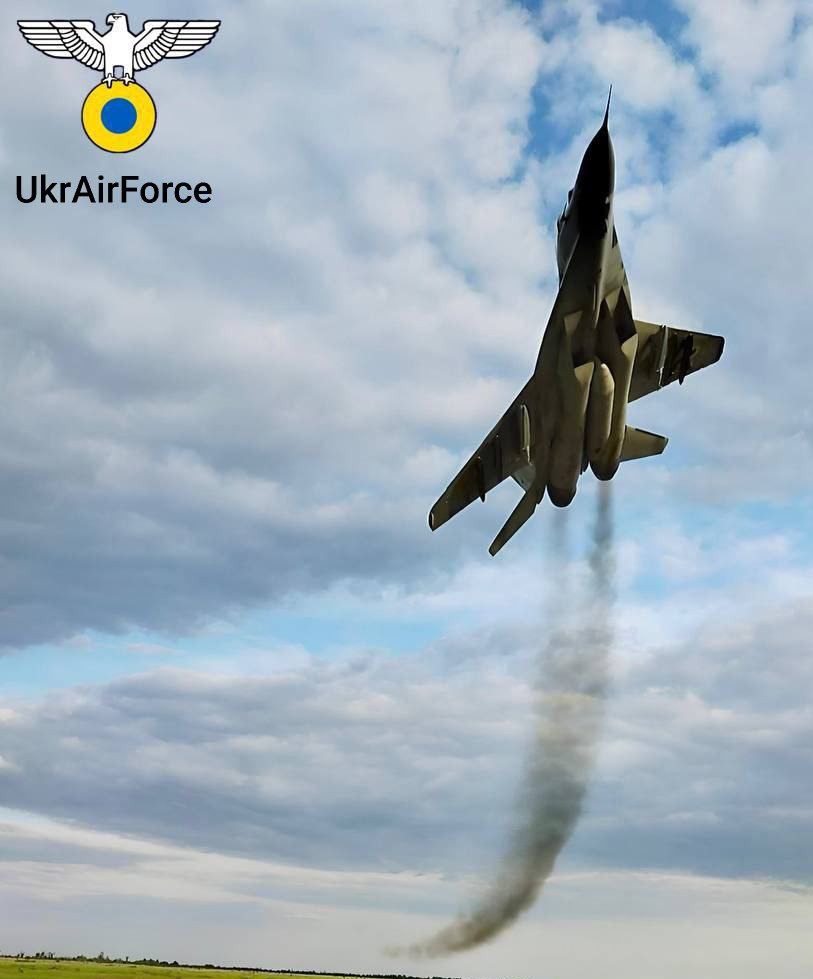A Tale Of Two MiG-29s: One Lobs Deadly GBU-39 Bombs On Russia While Another Goes Down In India

In an uncanny coincidence, two videos of the Soviet-origin MiG-29 Fulcrum combat aircraft emerged on social media on November 4. One video shows the MiG-29 moments before its tragic crash in India, whereas the other features a Ukrainian Fulcrum in action and lobbing lethal US bombs on Russian targets.
A MiG-29 Fulcrum of the Indian Air Force (IAF) crashed in an empty field in Agra, India, on November 4. The aircraft reportedly took off from Adampur in Punjab for a routine training flight. However, it encountered a “system malfunction” while flying over Agra.
“A MiG-29 aircraft of the IAF crashed near Agra during a routine training sortie… after encountering a system malfunction. The pilot maneuvered the aircraft to ensure no damage to life or property on the ground before ejecting safely. The IAF has ordered an inquiry to ascertain the cause of the accident,” the Air Force said in a statement.
A video of the aircraft hurtling down in a flat-spin emerged on social media site X and has since gone viral. A flat spin is a dangerous flight condition that occurs when an aircraft enters an uncontrolled spinning motion. The airplane has no forward speed in this spin mode, making it perilous as the pilot cannot use the controls to prevent the aircraft from stalling.
Shortly after this video went viral, another set of photos and videos showed the aircraft burning on a field and plumes of black smoke emanating from it.
One of the videos doing the rounds on X shows the pilots landing safely on the ground with a parachute after ejection.

This is the second crash involving an Indian MiG-29 Fulcrum since September this year. On September 2, an IAF MiG-29 fighter crashed in Rajasthan’s Barmer while conducting a night training mission. At the time, the IAF said a “technical snag” was responsible for the crash. The pilots had managed to eject safely, and there were no ground casualties or damage.
Before this, a MiG-29 crashed close to Jalandhar in Punjab in May 2020. The pilot, fortunately, ejected to safety after the aircraft became unresponsive and crashed shortly—bursting into flames.
AfriPrime App link: FREE to download...
Notably, India was the first export customer of the MiG-29 outside the Warsaw Pact when it ordered the fighter jet in 1984. The first batch of MiG-29 was inducted into service in 1987, and these fighter jets have since been the mainstay of the IAF.

In fact, the aircraft was extensively used during the 1999 Kargil War to provide fighter escort for Mirage 2000s tasked with dropping laser-guided bombs on enemy targets in Kashmir.
The aircraft has received several upgrades over the years, including modern radars, turbofan engines, subsystems, and avionics. In August 2024, the Indian Ministry of Defense (MoD) released a Request for Proposal (RFP) to modify 24 MiG-29s and incorporate 180-kilometre range HSLD Mk 2 bombs and missiles.
This upgrade will include the aircraft’s required software and extra hardware, including bomb racks on external hard points. The enhancements are meant to keep the aircraft on top of its game amid lingering threats across India’s northern and western borders.
The crash incidents do not bode well for the IAF, which is already staring at a rapidly shrinking squadron strength. The loss of existing aircraft would cause more dismay as the IAF struggles to induct cutting-edge fighter jets on order, such as the indigenously produced LCA Tejas MK1A.
While the MiG-29 went down in flames in India, causing a somber mood across the nation, the Ukrainian MiG-29 lifted spirits in the embattled country as it was seen lobbing lethal bombs on Russian targets in a recently published video.
Mig-29 Fulcrums Bombarding Russia
In an incredible display of military might, a breathtaking video of a Ukrainian MiG-29 dropping GBU-39 bombs—precision-guided weapons made in the United States—has gone viral on social media. The video was published by a popular Open Source Intelligence (OSINT) and war-tracking account called ‘OSINTtechnical.’
The video may be the first demonstration of the MiG-29’s capability to drop multiple GBU-39 bombs in a single aerial strike. “What appears to be the first publicly released video of a Ukrainian GBU-39 launch, and confirms that Ukrainian MiGs can send a number downrange at once,” the account wrote.
According to reports floating on social media, the aircraft was on a close air support mission in Orikhiv Axis in Eastern Ukraine when it was filmed dropping the bombs. These bombs allegedly targeted Russia’s infantry concentrations and arms depots. Some pro-Ukrainian military bloggers stated that the attack comes ahead of a fresh offensive here.
According to the US Air Force (USAF), “The GBU-39B Small Diameter Bomb, or SDB, is an extended range all-weather, day or night 250-pound class, guided munition. The SDB relies on the Global Positioning System to navigate to the target. Additionally, its small size allows increased aircraft load to achieve multiple kills per sortie and inherently reduces the probability of collateral damage.”

The visual confirmation of the bombs being lobbed by the Fulcrum comes after several unverified reports published over the last few months, alleging that the aircraft was dropping multiple GBU-39 bombs. The EurAsian Times, however, could not independently establish the veracity of these claims.
The development comes months after the first clear images of a MiG-29 Fulcrum armed with a GBU-39 Small Diameter Bomb (SDB) emerged on the internet. At the time, the aircraft was seen carrying three to four GBU-39 SDBs under a pair of underwing BRU-61 carriages.
According to reports, substantial logistical preparations have been made since the beginning of 2023 to modify the GBU-39 for use with Ukrainian aircraft, specifically the MiG-29. The approach required significant pilot training and other modifications to ensure successful deployment.
It was only in May 2024 that the Ukrainian military first revealed that it had started using air-launched SDBs. These bombs have given Ukraine a significant new means of accurately hitting targets at standoff ranges of up to about 46 miles or about 74 kilometers.
The bomb can be targeted and released against one or more targets. The aircrew loads SDB target coordinates into the weapon before releasing it, either in the air or on the ground. When released, the weapon uses GPS/INS to self-navigate to the intended impact point. Additionally, the bombs can also penetrate semi-hardened static targets, and Ukraine’s partners in NATO have large stockpiles of the weapons at their disposal.
The Ukrainian Air Force has yet to comment on the video or the use of GBU-39 at the time of writing this report. The development has, nonetheless, caused jubilation among the Ukrainian netizens and bloggers at a time when the Russians are fiercely advancing further inside the Ukrainian territory.
AfriPrime App link: FREE to download...
- Questions and Answers
- Opinion
- Story/Motivational/Inspiring
- Technology
- Art
- Causes
- Crafts
- Dance
- Drinks
- Film/Movie
- Fitness
- Food
- Giochi
- Gardening
- Health
- Home
- Literature
- Music
- Networking
- Altre informazioni
- Party
- Religion
- Shopping
- Sports
- Theater
- Wellness
- News
- Culture
- War machines and policy

